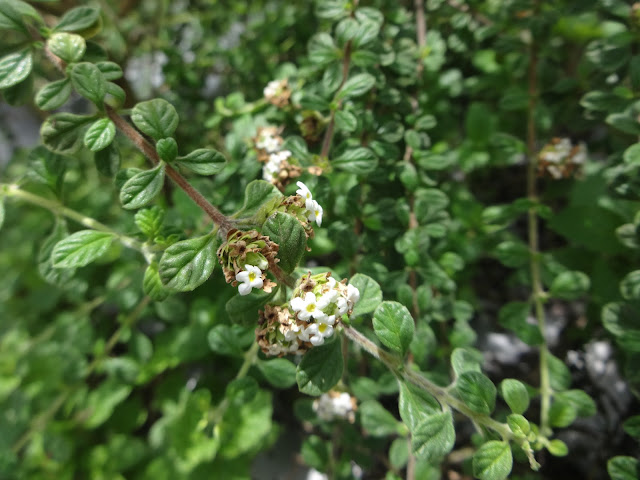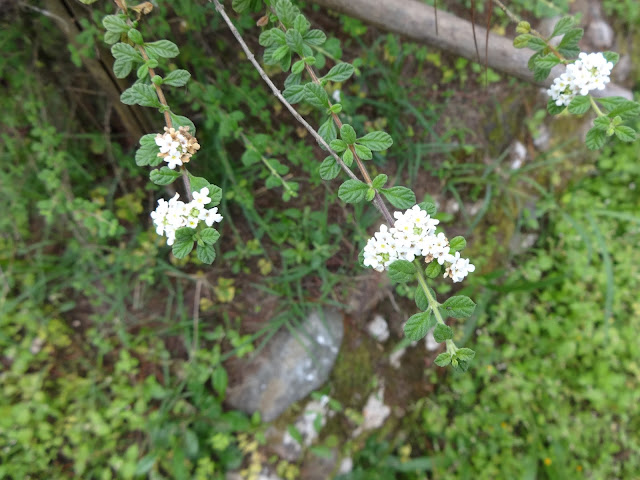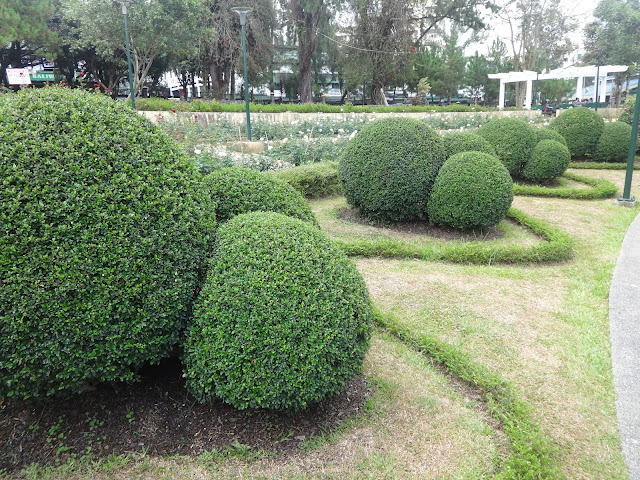 PLANT PROFILE
PLANT PROFILEWhile for people of temperate climate regions, Oregano means strictly mediterrean Origanum vulgare, in tropics it means usually Plectranthus amboinicus, Poliomintha bustamanta (or P. longiflora ) or Lippia micromera (or Lippia graveolens). Even though those four herb genuses look quite different, it all have very similar taste, aroma and medicinal values, thanks to carvacrol and thymol, that they all contain. Lippia micromera is native to North of South America and Caribbean Islands, and is widely cultivated throughout tropics up to the Philippines (where many people believe that it is Origanum vulgare or Marjoram). It has long history of use as a spice and medicine in Caribbeans, Central America and North South America.
It's common names include Jamaican Oregano, Dominican Oregano, Carribean Oregano, Mexican Oregano, Spanish Thyme, Oregano del Pais, Oregano Poleo, Puerto Rican Oregano, Oregano Chiquito, False Thyme, False Oregano, Petite Thyme, Oregato and Oreganillo.
CULTIVATION AND HARVESTING
Lippia micromera is sun loving, perennial, tropical bush with thin, tender, wheeping branches, reaching usually less than 2m, and tiny leaves around 1cm short and smaller flowers. It naturally inhabit dry hillsides and edges of forests. It like sandy loam and well-drained soils, with neutral or alcaline pH. Jamaican Oregano will survive on very pore soil, but to thrive it needs more compost. This plant will stand well in strong heat and severe draught, but excess of water might kill it. It is not hardy but can be grown as container houseplant in temperate regions.
CULINARY USES
Fresh or dried leaves of Jamaican Oregano are traditionaly used as a spice in Caribbean cuisine. It can be used in same wide way as Greek Oregano, but it's taste and aroma is more intense and ritcher . It is used for meat or fish dishes, pizzas, stuffings, stews, soups and salads. To prevent its aroma to evaporate with the steam it is best added in last minutes of cooking.
MEDICINAL USES
Lippia micromera is traditionaly used for asthma, bronchitis, common cold, cough, flu, oliguria, to support digestion and ease stomach infections, it is eaten fresh or drunk in form of tea. Strong infusion can also be used for mouthwash. It acts as antibacterial, antifungal, anti-yeast, diuretic, depurative, antispasmodic, anti-asthmatic, antiemetic, demulcent, expectorant, stimulant, stomachic, tonic, diuretic. Chemical composition of Lippia micromera's essential oil strongly vary in proportions of carvacrol (26,5 - 48%), thymol (7,1 - 33,7%), y-terpinene (4,5 - 22,5%), p-cymene (11,5 - 16,2%), beta-caryophyllene (12,1%),1,8-cineole (2,2%), it also contain small amounts of limonene, linalool, geranial, eugenol, neral and menthol.
This herb is one of most commonly used herbs in Caribbean culture to fight ''fright'', caused by shock, fear or worry. Lippia micromera should not be taken in significant amounts, during pregnancy.










EDSA Garden Centre, Manila, the Philippines - may 2015
Baguio Orchidarium Plant Shops, Baguio City, the Philippines - september 2015
Sources
'' The Encyclopedia of Herbs: A Comprehensive Reference to Herbs of Flavor and Fragnance '' - Thomas DeBaggio, Arthur O. Tucker, Timber Press 2009
'' CRC Ethnobotany Desk Reference'' - Tim Johnson, CRC Press 1998
'' Encyclopedia of Cultivated Plants '' - Christopher Cumo, ABC-CLIO 2013
'' Ethnic Culinary Herbs'' - George Staples, Michael S. Kristiansen, University of Hawaii Press 1999
'' Florida's Best Herbs and Spices: Native and Exotic Plants Grown for Scent and Flavor '' - Charles R. Boning, Pineapple Press 2010
'' Mansfeld's Encyclopedia of Agricultural and Horticultural Crops ''- Peter Hanelt, Springer Science & Buisness Media 2001
'' Oregano, the genera Origanum and Lippia ''- Spiridon E. Kintzios, Taylor and Francis 2002
http://davesgarden.com/guides/pf/go/128624/#b
http://plantsforuse.com/index.php?page=1&id=3113
http://clikwebbr.blogspot.com/2011/08/agrochic-hablemos-de-oregano.html
http://www.researchgate.net/publication/11892179_Lippia_Traditional_uses_chemistry_and_pharmacology_A_review
http://memorias.ioc.fiocruz.br/issues/special-issues/item/326-chemical-composition-and-antiprotozoal-activities-of-colombian-lippia-spp-essential-oils-and-their-major-components
http://www.nybg.org/files/scientists/ivandebroek/Foods_as_Medicines_Dominicans.pdf
http://www.researchgate.net/publication/261654586_Chemical_Composition_and_Bioactivity_on_Bacteria_and_Fungi_of_the_Essential_Oil_from_Lippia_micromera_Schauer
http://hortsci.ashspublications.org/content/35/3/452.4
http://tropical.theferns.info/viewtropical.php?id=Lippia+micromera
http://www.ethnobiomed.com/content/6/1/9
http://www.saintlucianplants.com/localuses/lippmicr.html
https://ethnobiology.org/sites/default/files/pdfs/JoE/17-2/CoeAnderson1997.pdf


































































